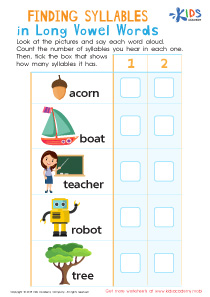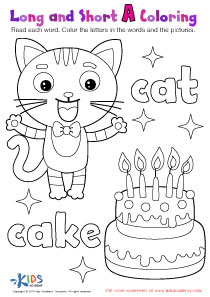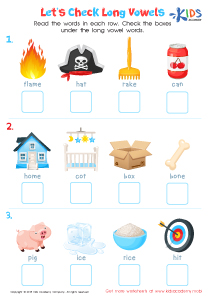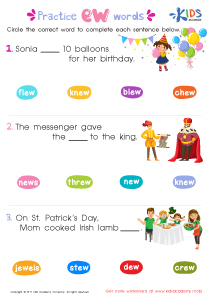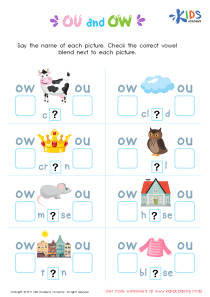Vowel Blends Worksheets for Ages 4-6
4 filtered results
-
From - To
Unlock the world of reading with our Vowel Blends Worksheets, specially designed for Ages 4-6! Our engaging collection invites young learners to explore the magic of vowel combinations through a variety of activities. These worksheets are tailored to captivate the minds of little ones, making the journey of learning to read not just educational, but also incredibly fun. Each page introduces vowel blends in a simple, understandable manner, paving the way for a solid foundation in literacy. Perfect for preschoolers and kindergarteners, our Vowel Blends for Ages 4-6 worksheets are your child's stepping stone to mastering the art of reading. Start their adventure today!
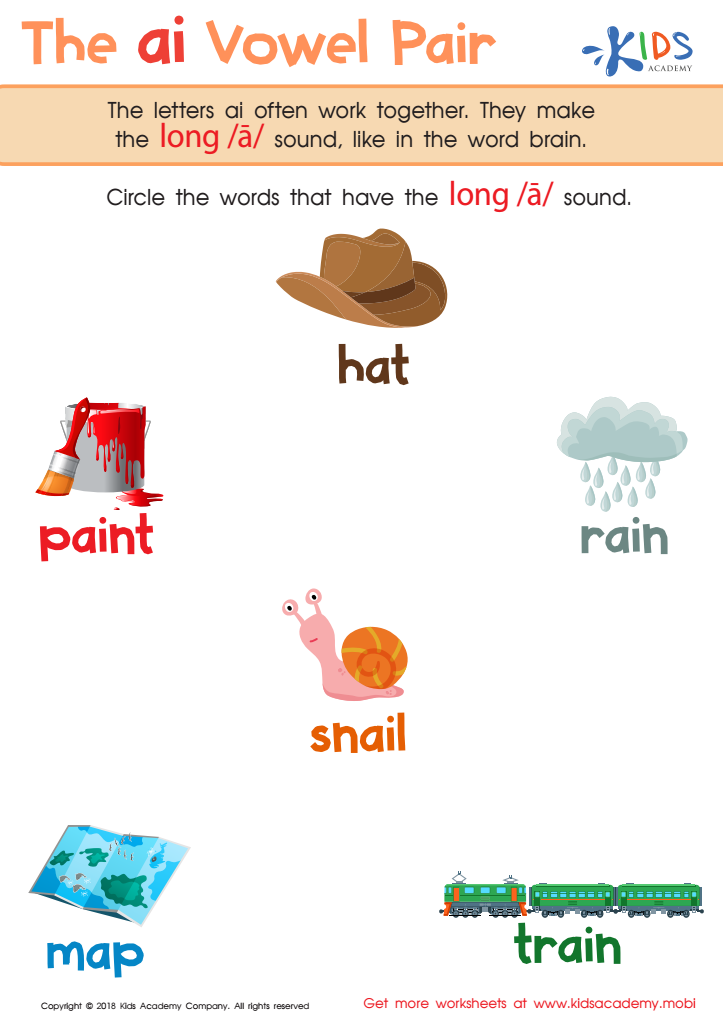

The AI Vowel Pair Worksheet
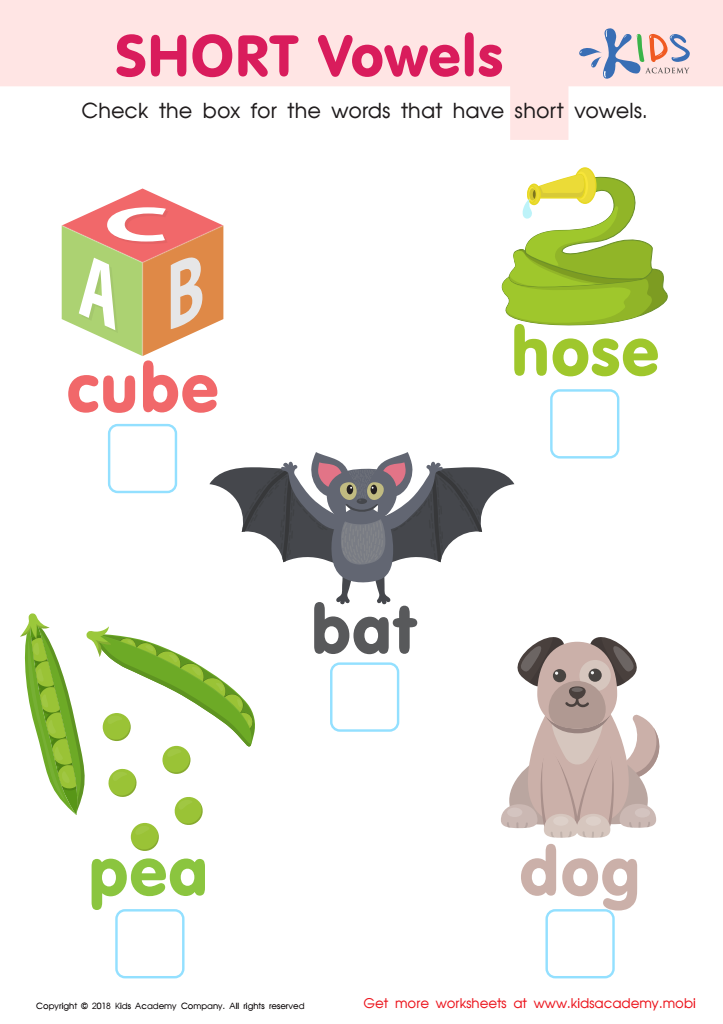

short vowels Worksheet
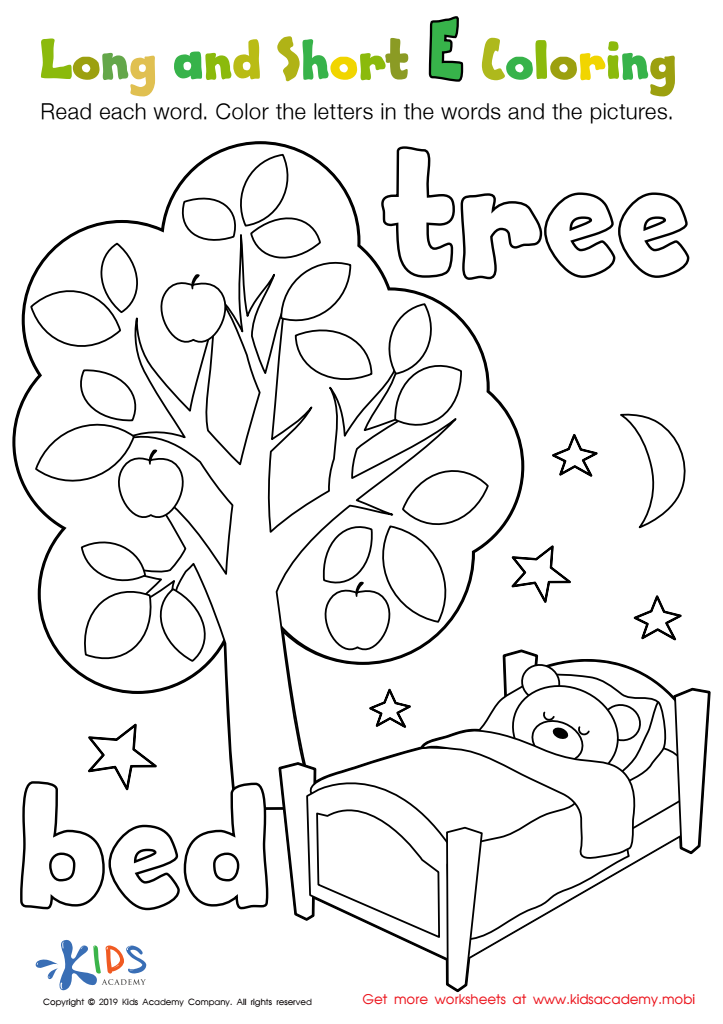

Long and Short E Worksheet
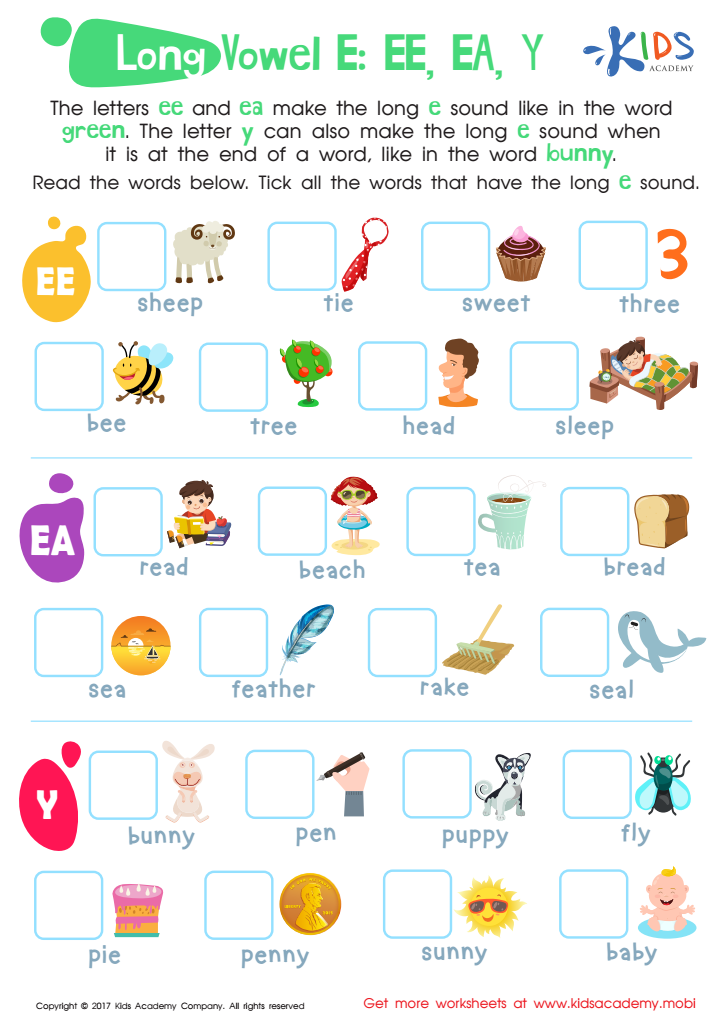

Long Vowel E Printable
Vowel Blends worksheets designed specifically for ages 4-6 are instrumental in laying a solid foundation for reading and phonics skills in young learners. At this critical developmental stage, children are like sponges, eager and ready to absorb the nuances of language. Vowel blends, which are combinations of vowels that create specific sounds, are a fundamental aspect of learning to read and write effectively.
For children ages 4-6, understanding and practicing vowel blends can significantly enhance their phonemic awareness. This is because vowel blends often form the core of many words they are beginning to recognize and read. Through engaging and age-appropriate worksheets, children can explore these sounds in a structured yet fun environment. These activities not only reinforce their existing knowledge but also encourage curiosity and a love for learning.
Moreover, worksheets focused on vowel blends offer a hands-on learning experience. By tracing, matching, and filling in blanks, young learners develop fine motor skills alongside their literacy skills. This multi-faceted approach ensures that children are not only learning to identify and use vowel blends but are also building the confidence and ability to apply this knowledge in their reading and writing.
In summary, Vowel Blends worksheets for ages 4-6 are a valuable tool in early childhood education. They support the development of essential reading skills, foster a positive learning experience, and prepare children for future academic success.
 Assign to the classroom
Assign to the classroom



